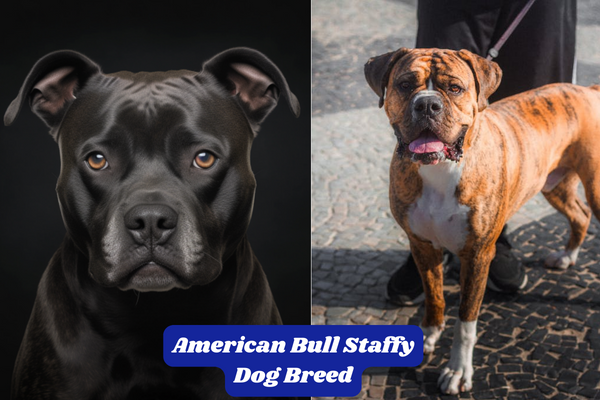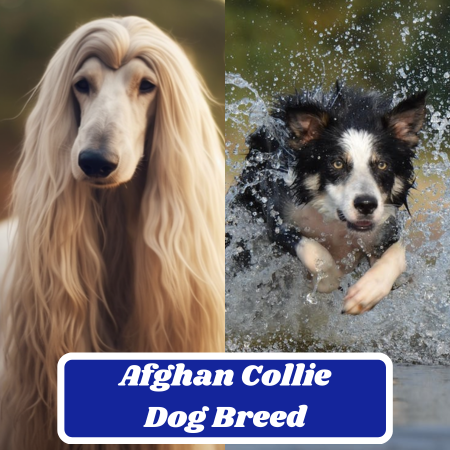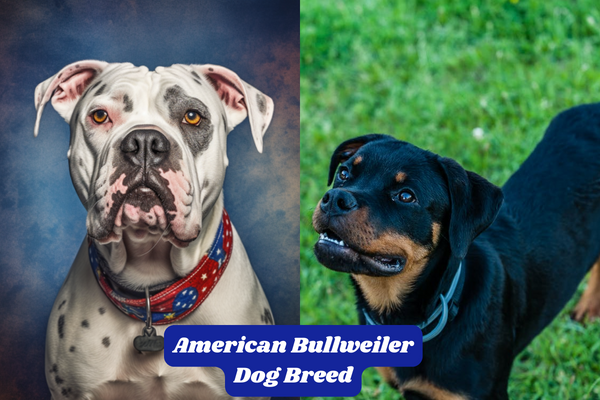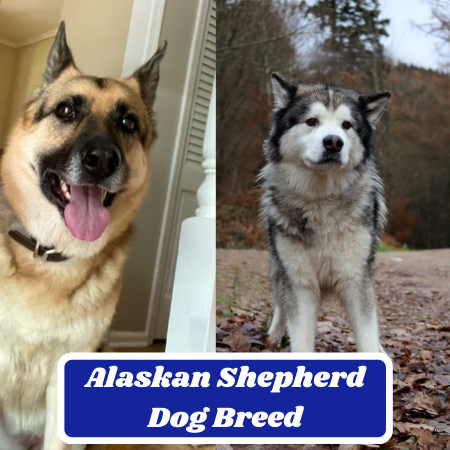Afghan Sheepdog Dog Breed: A Comprehensive Guide On Facts, Information & Characteristics
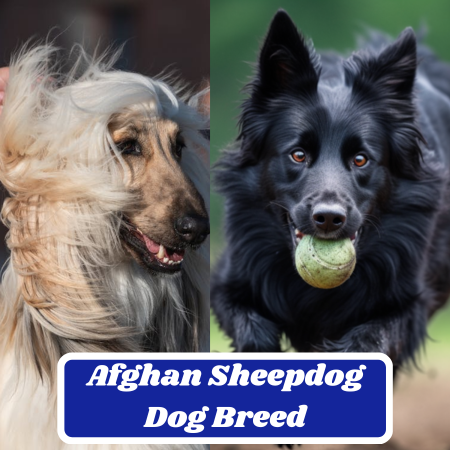
| Height | Weight | Lifespan | Colors | Suitable for | Temperament |
|---|---|---|---|---|---|
| 25-29 inches | 40 – 90 pounds | 10 – 14 years | black, cream, golden, or gray | Families, playing, active | Funny, Loyal, active |
The Afghan Sheepdog Breed: An Overview
The Afghan Sheepdog, also known as the Afghan Shepherd or Kuchi dog, is a crossbreed of an Afghan Hound and a Belgian Sheepdog
The Afghan Sheepdog is an intelligent and independent breed that requires an experienced owner with strong leadership skills. Afghan Sheepdogs are known for their long, thick coats which require a lot of grooming to maintain.
They have a tall and lean physique with long legs and powerful muscles. They are also known for their impressive endurance and agility.
Breed Facts and Information
It’s important to do your research before deciding to adopt any dog breed, including the Afghan Sheepdog. These dogs require a lot of exercise and are not for beginner owners.
Understanding the characteristics, temperament, health issues, and care requirements can help you make an informed decision that fits your lifestyle. Knowing about a breed’s history can also provide insight into its personality traits and behavior tendencies.
As a working dog breed with roots in Afghanistan’s harsh terrain, and being used in tactical missions, Afghan Sheepdogs are naturally protective of their family members and can become wary of strangers if not properly socialized.
By educating yourself on these aspects of the Afghan Sheepdog breed and any other breeds you may be considering adopting, you’ll be better prepared to give your new furry friend the love and care they need to thrive in your home.
History and Origin
Since the Afghan Sheepdog is a crossbreed, they don’t have a distinct breed history of their own. However, their parent breeds are well-known and beloved.
The Afghan Hound, a large sighthound originally from Afghanistan, was primarily used for hunting fast prey such as rabbits and gazelles. Today, they are more commonly seen participating in sporting events like agility to burn off their energy.
The Belgian Sheepdog, on the other hand, was originally a herding breed developed in the 1800s. However, in modern times, they are frequently used for police work or search-and-rescue missions.
Historical uses as a working dog
Throughout history, both of these breeds have a history or being working dogs. This means they both will have a high amount of energy.
Belgian Sheepdogs have been utilized in a variety of roles due to their intelligence and obedience levels. They were frequently employed by shepherds for guarding flocks from predators such as wolves or jackals. The dogs would roam around the outskirts of the herd making sure no harm came to them.
In addition, Belgian Sheepdogs have also served alongside police offers and even soldiers during times of war. Their ability to navigate difficult terrain made them valuable assets on battlefields where they would act as sentries or messengers.
The French military began working training the Belgian Sheepdogs as their messengers for the war.
In modern times, you are more likely to find an Afghan Sheepdog living in someone’s home rather than out on a battlefield or guarding sheep herds; however; it is important not to underestimate this breed’s natural instincts when it comes to protecting their family.
Physical Appearance and Characteristics
| Breed Characteristics | |
|---|---|
| Temperament | |
| Affectionate with Family | ⭐️⭐️⭐️⭐️☆ |
| Good with Children | ⭐️⭐️⭐️☆☆ |
| Sociability with Dogs | ⭐️⭐️⭐️☆☆ |
| Friendliness towards Strangers | ⭐️⭐️☆☆☆ |
Physical Appearance
The Afghan Sheepdog, also known as the Afghan Shepherd or Kuchi, is a large breed of dog that stands at around 25 to 29 inches tall and weighs between 40 to 90 pounds. They have a long, thick coat that comes in a variety of colors such as black, cream, golden, or gray. Their distinctive appearance is unmistakable with their unique look.
Temperament and Personality Traits
Afghan Sheepdogs are known for being loyal and protective of their family members. They tend to be reserved with strangers but are affectionate toward their owners.
They are intelligent dogs that require mental stimulation to keep them happy and healthy. The breed is also known for being independent thinkers that can be challenging to train if they aren’t properly motivated.
Though Afghan Sheepdogs can have an aloof temperament, they tend to be gentle around children if socialized properly. However, due to their size and strength, it’s essential for them to receive training on how to interact appropriately with children.
Personality and Temperament
| Breed Characteristics (Higher = More Suited) | |
|---|---|
| Flexibility | |
| Apartment Living | ⭐️☆☆☆☆ |
| Good For New Owners | ⭐️☆☆☆☆ |
| Are They Sensitivite? | ⭐️⭐️⭐️⭐️☆ |
| Good With Being Alone | ⭐️⭐️☆☆☆ |
| Prefers Cold / Winter Dog | ⭐️⭐️⭐️⭐️☆ |
| Prefers Warm / Summer Dog | ⭐️⭐️⭐️☆☆ |
Children And Other Pets
Before bringing an Afghan Sheepdog into your family, it’s important to take several factors into account. While this breed typically gets along well with older, respectful children, they may not have the patience for young children who are overly grabby or don’t understand how to treat dogs properly.
The Afghan Sheepdog’s herding instincts can also be troublesome around small children and accidentally result in knocking them over. Additionally, as a hunting breed, some Afghan Sheepdogs may have a stronger prey drive which could pose a challenge if there are small pets like hamsters in the home. However, with their trainability, this issue can be addressed to some extent.
Training and Exercise Needs
| Trainability | Rating |
|---|---|
| Ease To Train | ⭐️⭐️⭐️⭐️⭐️ |
| Smart | ⭐️⭐️⭐️⭐️⭐️ |
| Potential For Mouthiness | ⭐️⭐️⭐️☆☆ |
| Prey Motivation & Frequency | ⭐️⭐️⭐️⭐️☆ |
| Loudness – Barking / Howling (higher = louder) | ⭐️⭐️⭐️☆☆ |
| Physical Needs | Energy Level | Intensity | Exercise Needs | Potential for Playfulness |
|---|---|---|---|---|
| ⭐️⭐️⭐️⭐️⭐️ | ⭐️⭐️⭐️⭐️⭐️ | High | At least 1 Hour / day | Very High |
Exercise Needs
Afghan Sheepdogs require daily exercise in the form of walks or outdoor playtime in a securely-fenced area since they tend to roam if not supervised adequately. Mental stimulation through obedience training or interactive toys is also necessary as these dogs thrive on new challenges. Training an Afghan Sheepdog requires patience since they can be independent thinkers that may not always follow commands quickly.
Positive reinforcement techniques like treats or praise work best when teaching new commands or tricks. Socialization from a young age will also help ensure your dog knows how to interact appropriately with other people and animals.
Friendly Nature Toward Humans and Other Pets
| Activity and Exercise Needs | |
| Energy Level | ⭐️⭐️⭐️⭐️⭐️ |
| Exercise Needs | ⭐️⭐️⭐️⭐️⭐️ |
| Playfulness | ⭐️⭐️⭐️⭐️⭐️ |
Health Concerns and Care Requirements
| Health and Grooming Needs (Lower The Starts = The Less) | Rating |
|---|---|
| Shedding | ⭐️⭐️⭐️☆☆ |
| Drooling | ⭐️⭐️⭐️⭐️☆ |
| Grooming Difficulty | ⭐️⭐️⭐️⭐️☆ |
| General Health (higher = better) | ⭐️⭐️⭐️⭐️☆ |
| Weight Management (Potential for weight gain) | ⭐️⭐️⭐️☆☆ |
| Size | ⭐️⭐️⭐️☆☆ |
Afghan Sheepdogs are generally a healthy breed, but as with any breed, they do have some potential health issues to watch for. Some of the most common health issues that Afghan Sheepdogs may experience include hip dysplasia, eye problems such as cataracts and progressive retinal atrophy (PRA), and allergies. Hip dysplasia is a genetic condition where the thigh bone does not fit properly into the hip joint, causing discomfort and eventual arthritis in affected dogs.
Eye problems are also relatively common in Afghan Sheepdogs, with cataracts and PRA being two conditions that can lead to vision loss if left untreated. Regular visits to the veterinarian for check-ups and preventative care can help identify potential health issues early on.
Common Health Issues to Watch For
In addition to hip dysplasia and eye problems, other potential health concerns in Afghan Sheepdogs include hypothyroidism, cancer, bloat (gastric torsion), and heart disease. It is important for owners to be aware of these conditions so they can monitor their dog’s health and seek veterinary care if necessary.
One way owners can help prevent certain health issues is by providing good nutrition. Proper nutrition is important for any dog’s overall health and well-being.
Afghan Sheepdogs have a thick coat that requires regular grooming, which also supports good skin health. Additionally, regular exercise helps keep this active breed mentally stimulated while promoting physical fitness.
Although Afghan Sheepdogs bred by responsible breeders are generally healthy, it is important to note that this crossbreed may have certain genetic predispositions to health issues.
- Hip Dysplasia
- Hypothyroidism
- Cataracts
- Progressive Retinal Atrophy
- Muscular Dystrophy
Grooming Needs For Their Thick Coat
The thick coat of an Afghan Sheepdog requires regular grooming to prevent matting or tangling. Weekly brushing with a slicker brush or comb helps remove dead hair while distributing natural oils throughout the coat, promoting healthy skin and preventing matting.
Owners should also be prepared to trim hair around their dog’s paws regularly to prevent dirt buildup or slipping. Afghan Sheepdogs have a long coat that sheds moderately throughout the year and heavily twice a year during shedding season.
Regular grooming is essential to keep their coats healthy, shiny, and free of mats. In addition to brushing and trimming, owners may opt to bathe their Afghan Sheepdog occasionally with a mild dog shampoo to keep the coat clean without stripping natural oils.
Nutrition Requirements
Afghan Sheepdogs require a well-balanced diet that provides them with all the necessary nutrients for optimal health. Commercial dog food can provide a complete and balanced diet, but owners should be sure to choose high-quality brands without fillers or artificial preservatives.
Owners can also choose to feed their Afghan Sheepdog a homemade diet with guidance from their veterinarian or canine nutritionist. This option requires careful attention to nutrient balance and portion size, but can be beneficial for dogs with specific dietary needs or preferences.
Overall, proper nutrition plays an important role in keeping Afghan Sheepdogs healthy throughout their lives. A balanced diet combined with regular exercise and veterinary care can help this breed thrive as loving family pets.
Feeding
To properly nourish the Afghan Sheepdog, it’s important to provide them with a diet suitable for a high-energy large breed. You may also want to incorporate enrichment items such as filler toys or a snuffle mat into their diet to stimulate their mind. However, since every dog has unique dietary needs, it’s recommended to consult with a veterinarian to determine the most appropriate food for your Afghan Sheepdog.
Unique Characteristics and Quirks of the Breed
One of the most obvious unique characteristics of Afghan Sheepdogs is their long, flowing hair. This makes them look majestic and regal, but it also requires a lot of upkeep.
The coat needs to be brushed regularly to prevent matting, and they need a bath every few months to keep them clean and fresh-smelling. Another interesting quirk of Afghan Sheepdogs is their independent nature.
They were bred to work on their own in remote regions with little human guidance, which means they can sometimes be stubborn or aloof. However, with proper training and socialization, they can make great family pets who are affectionate and loyal.
Overall, Afghan Sheepdogs are a fascinating breed with a rich history and many unique characteristics. Whether you’re a history buff or just love dogs with long hair, there’s something about this breed that’s sure to capture your attention!
Concluding The Afghan Sheepdog Breed
The Afghan Sheepdog is a unique and beautiful breed with a rich history. They are tall and muscular dogs with long, flowing coats that require regular grooming. Despite their regal appearance, Afghan Sheepdogs are known for their playful personalities and love for their owners.
They do require regular exercise and training to prevent destructive behavior. It’s important to note that Afghan Sheepdogs can be difficult to train due to their independent nature.
However, with patience and consistent training, they can become well-behaved family pets. Additionally, potential owners should be aware of the health issues commonly associated with this breed.
If you’re considering adding an Afghan Sheepdog to your family, we encourage you to do your research first. Learn about the breed’s temperament, exercise needs, and grooming requirements before committing to a new pet.
If you decide that an Afghan Sheepdog is right for you, consider adoption from a rescue organization or shelter. Many purebred dogs end up in shelters due to changes in their owners’ circumstances or because they were purchased on impulse without proper research.
Overall, the Afghan Sheepdog is a unique and fascinating breed that can make a wonderful addition to the right home. With proper care and attention, these dogs can provide years of love and companionship.

